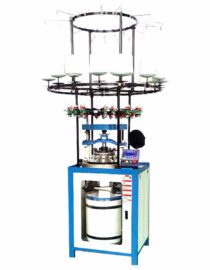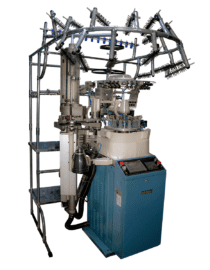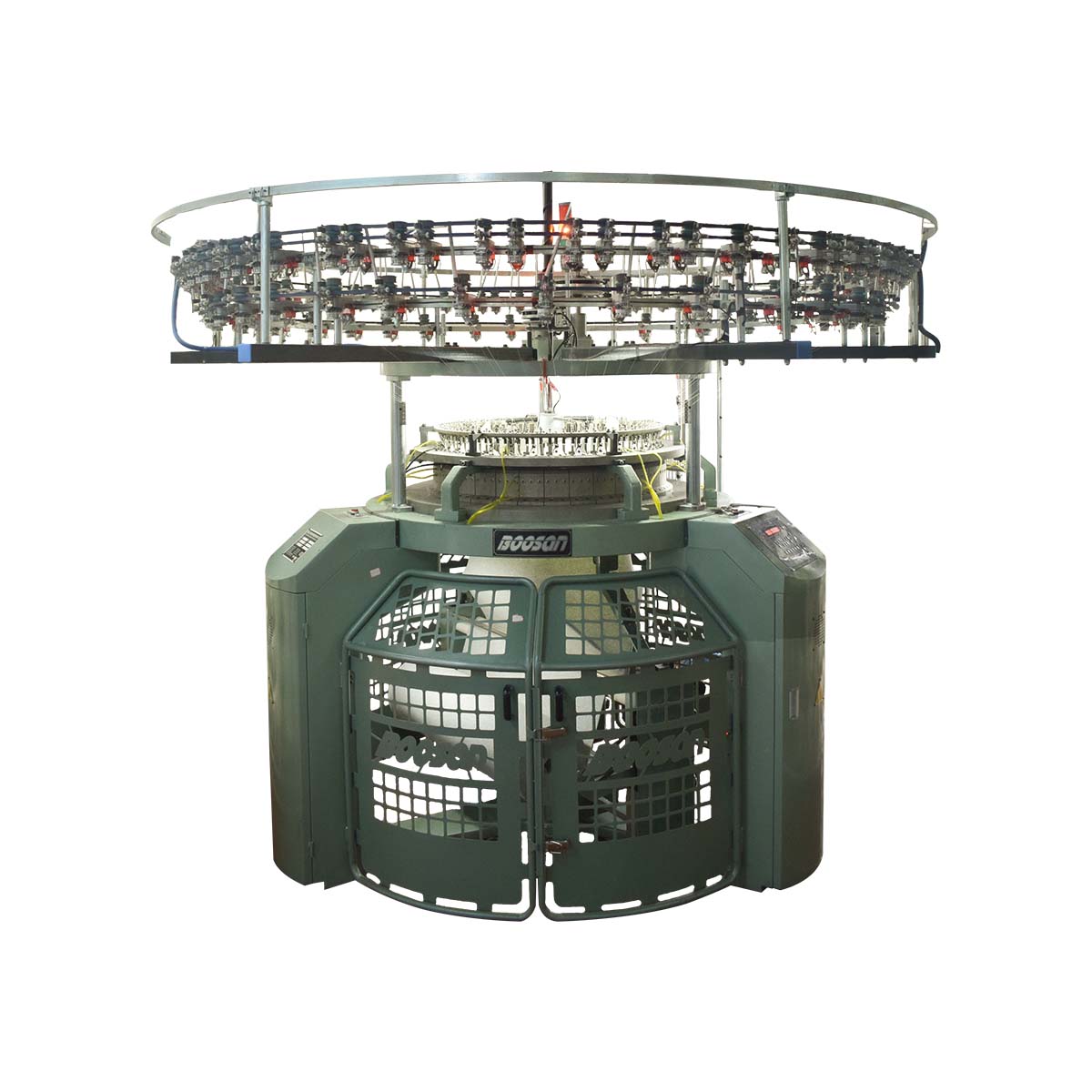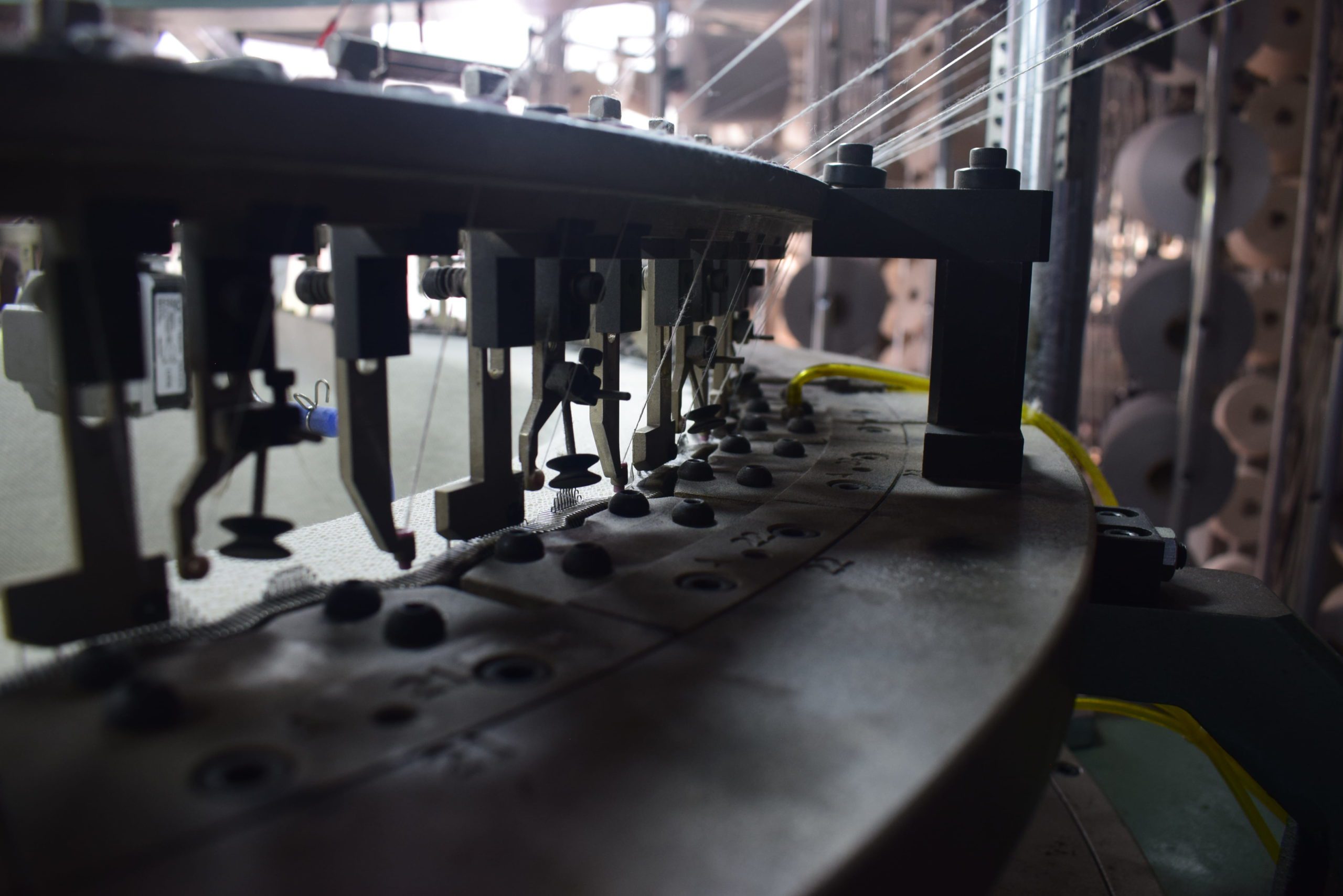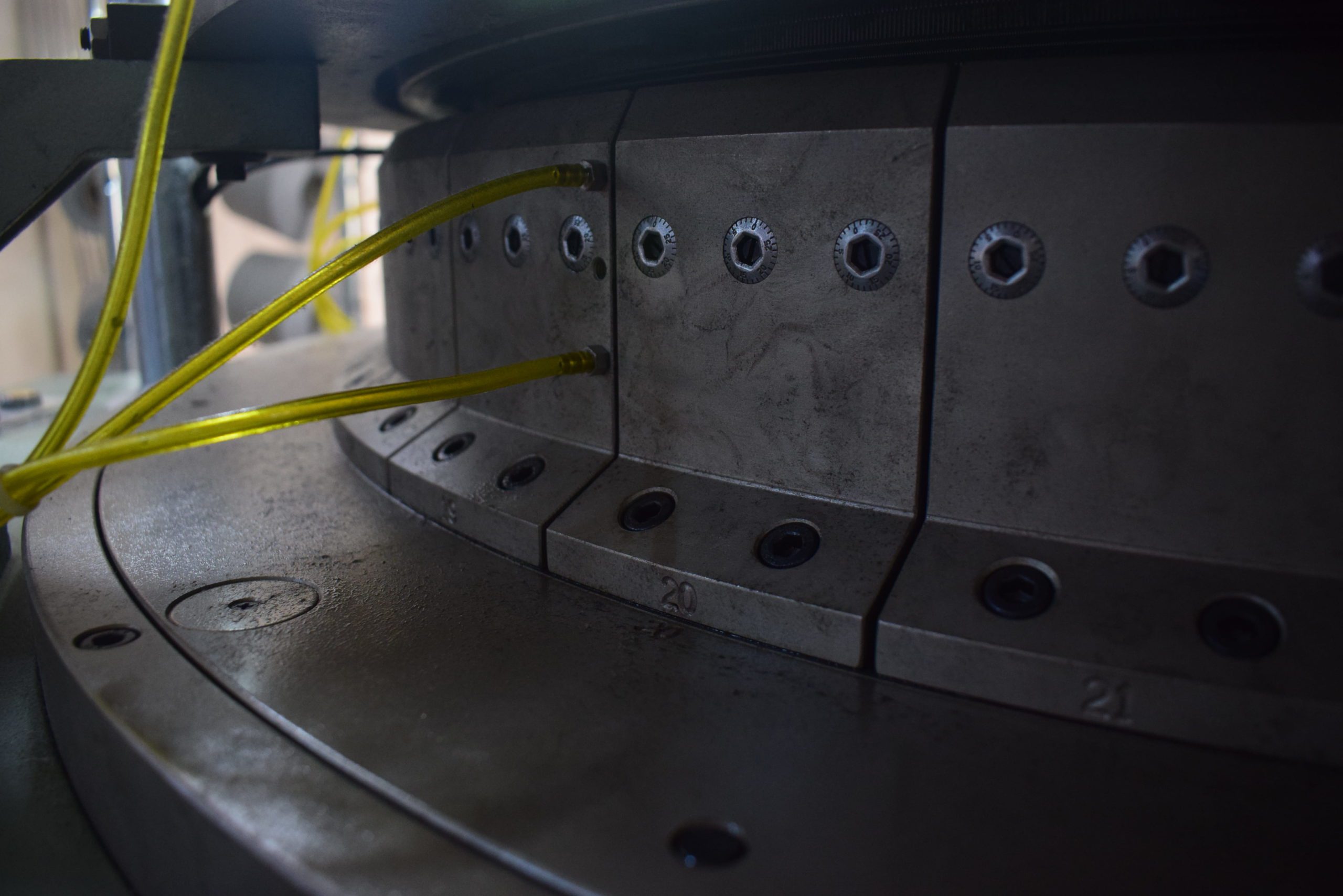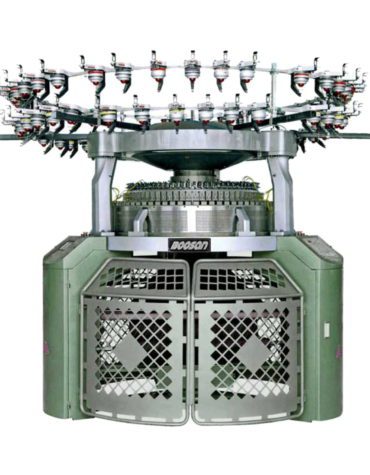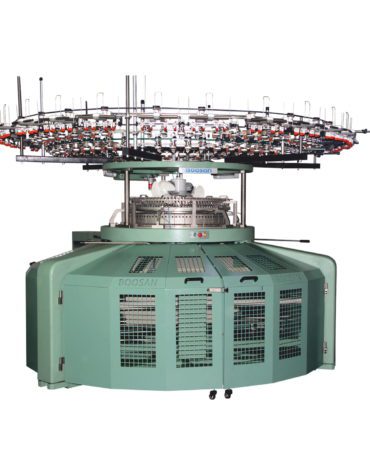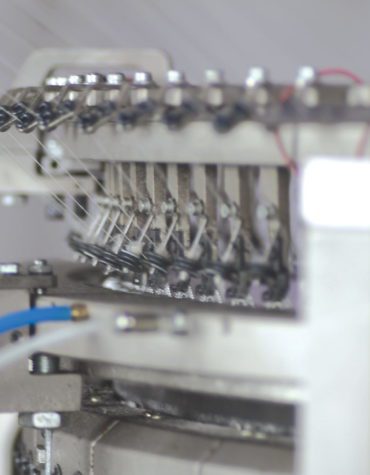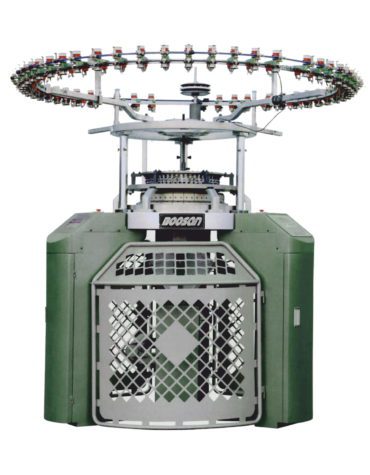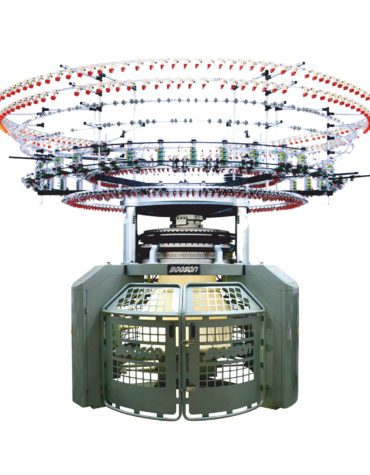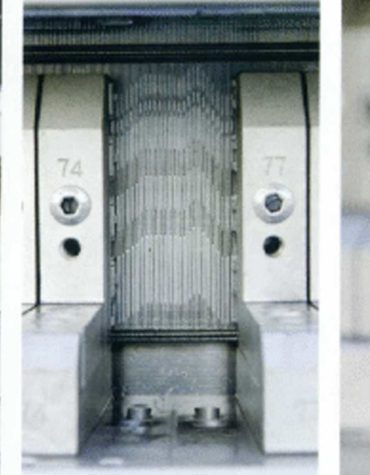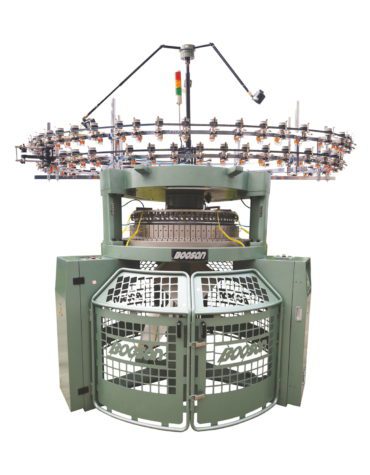- You have no items in your shopping cart
- Continue Shopping
3 Yarn Circular Knitting Machine
$1.00
Achieve efficiency in the production area with the 3 Yarn Circular Knitting Machine. It allows you to save time in production with its easy use and performance. With its superior performance and quality production capability, it makes a far difference from its counterparts. With this machine, you can produce quality and unique products.
In terms of spare parts supply and technical support service, our company stands behind our products by considering customer satisfaction until the end.
3 Yarn Circular Knitting Machine
3 Yarn Circular Knitting Machine is simple and stable with small automatic auto-strip device, which can ensure very good quality and high production.
The new type designed central system has a tight structure and goes up and down steadily, allowing precise and simple adjustment of the fabric weight.
The machine uses advanced computerized system with user-friendly operation interface. All of the models can be saved in U disk and read by computer.
Lycra yarn feeders can be equipped to design a full range of elastic colored strip fabrics.
The most famous way of textile production after weaving is knitting. To understand the circular knitting machine, we need to understand what it means to knit. There are two main textile ways for knitting. One is welding and the other is warping. The difference in Warping and Warping is due to the movements of the needles during production and the way the yarn is supplied. However, in the warp knitting technique, the needles move simultaneously. In addition, each needs fiber material at the same time.
To summarize briefly; The most important knitted knits are knits such as circular knitting, warping flat knitting.
For detailed information about our Circular Knitting Machines, please click on the link here.
Talking about circular knitting machine, Circular knitting machine produces a tubular fabric. It occurs in different sizes and diameters depending on the application area. In this machine, the sinkers and needles are arranged in a circle. It is divided into two according to machine sets and numbers. One set of plain and two sets of rib, interlock, spacer fabric.
The most common fabric produced in a circular knitting machine is t-shirt fabric. Almost any material can be used for production. The form varies from filament to staple fiber yarn. Two sets of needles are required to produce this type of fabric, and the needles must be arranged differently. Loops are created in two different directions. The result is a smooth fabric on both sides. This is due to the correct loop structure on both sides. Rib construction shows rib loops on both sides of the fabric. These fabrics can be produced using loops or needle transfer.
Until now, the circular knitting machine has been designed and manufactured for an enormous amount of knitted fabrics. The specific properties of knitted fabrics make them suitable for use in the fields of these fabric types, especially fine fabrics made by the circular knitting process, clothing, industrial textiles, medical and orthopedic clothing, automotive textiles, socks, agricultural textiles.
Famous manufacturing companies try to improve themselves, the reason for doing this is because they want to find new markets and new opportunities for themselves. Experts in the knitting industry should be aware that tubular and seamless fabrics are highly suitable for a variety of applications, not only in textiles, but also in medical, electronic agriculture, civil and other fields.
3 Yarn Circular Knitting Machine principles and classification
There are many types of circular knitting machines produced in long lengths or tubular forms for ready-to-use products. Single plate machines are equipped with a single roller needle that produces flat fabrics about 30 inches in diameter. Wool production on single plate machines tends to be 20 gauge or thicker as these gauges can use two-ply wool yarns.
Another feature of wool jersey fabrics is that the fabric edges tend to curl inward. This is not a problem when the fabric is tubular, but it can create difficulties if the fabric is not finished correctly after cutting. Terry fabric loopers are the basis for fleece fabrics, which are produced by knitting two threads into the same stitch, a ground thread and a loop thread.
These protruding loops are then brushed or lifted during finishing, creating a fleece fabric. Sliver knitting machines are single jersey machines adapted to encapsulate a sliver staple fiber into the knit structure.
Finally, Double plate machines are a ‘dial’ single jersey machines with an extra set of needles placed horizontally adjacent to the vertical cylinder needles. This extra needle set enables fabrics to be produced twice as thick as single jersey fabrics.
Electrical Features
The electrical system is equipped with the memminger-iro navigator system to provide full control of all functions and to export and store production data as needed.
| Inverter | The best quality is in well-proportioned dimensions: 5.5 kW (7.5 hp) |
|---|---|
| Main Electric Motor | It is well proportioned. 5.5 kW (7.5 hp) |
| Electric Cabinet | It provides the best control of the temperature with its perfect ventilation. |
| Electric cables | It is mounted separately from the machine for easy maintenance. |
| Safety | In case of danger, the Emergency button stops the machine and turns off the electrical system. (CE compliant) |
| Signal Lamps | Colored lights indicate different stopping reasons. |
| Timer | It prevents the machine from operating at high speed before completing the warm-up cycle (according to the operator’s setting). |
| LFA Monitor | Electronic yarn consumption meter, up to 5 belts (LFA: yarn length taken per machine revolution) |
| Scanner | It detects various fabric defects and allows the machine to stop automatically. |
| Data Collector | It provides the ability to easily connect a PC. |
Cleaning
| Automatic Cleaning | During production (operator-programmed pulsed airflow that ensures the best cleaning and air use) |
|---|---|
| Cleaning Cycle | It keeps the knitting unit, needles and sinkers perfectly clean at the end of the roll (automatic and adjustable). |
| fans | Powerful fans in the rollers and feeder chambers (providing optimal cleaning of yarn and feeders during production). Fans can also be used when the machine is not running to prevent the accumulation of lint. |
| Fan Rotation | Motor controlled ensures constant speed. |
| Timed Compressed Air Blow | Eliminates the cotton dust / lint barrier, keeping the yarn shuttles perfectly clean. |

